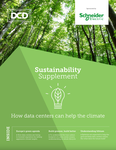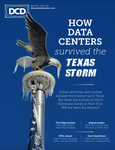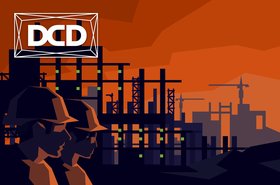As the pandemic developed, hitting us wave by wave, we saw or experienced increasing stress on many industries, e.g., from healthcare - working overtime to provide care to the infected – to catering and tourism, suffering from a lack of customers, and aviation decimated with air travel stalled.
In recent years, the data center sector has joined those industries providing critical infrastructure for everyday business and social life. However, throughout this extraordinary period, its role has been even more critical.
Home becomes a prison?
For some, working from home has been a breath of fresh air, for others it has felt like a prison. In both cases demand for services from data centers has been spread across the day. Normal timeframes no longer apply, the boundaries between work and rest have become blurred. One moment we’re attending video or voice calls, the next moment we’re streaming movies. At any time we might have been organizing our online shop due to the restrictions imposed on visiting physical stores.
In times of the pandemic, physical business meetings have been kept to a bare minimum, whilst the use of online meetings has expanded. The transformation to working from home literally happened overnight and came at a pace nobody was either expecting or planning for. The effect is that more data needed to be processed by the tech companies supporting remote working and online meetings, residing in data centers.
The pandemic has therefore reinforced the importance of data centers, while activities that have increased in this new digital world with have made a major impact on the network.
It is a credit to the industry that critical digital infrastructure has reacted so well to this increase in demand. It has seamlessly supported the vast majority of organizations in adapting to the lockdown environment. At the same time, it has dealt with increased demand for online activities, social media, gaming and shopping, as we looked to keep ourselves entertained while we couldn’t go out.
Pue improves
The impact on the affected data centers is that the IT load picks up, depending on the type and technological age of the facility involved. Looking at a data center’s Power Usage Effectiveness (PUE), it’s likely to have been affected positively and some might even be noticeably lower – which is the goal for both the data center owner and customer. However, PUE only demonstrates that power is better used and not that less power is used.
The data center industry has been a leader when it comes to carbon footprint awareness and Greenhouse Gas (GHG) reduction, as well as for implementing measures to increase energy efficiency. Moving forwards, the largest proportion of GHG emissions will no doubt be mitigated by the use of power from sustainable energy sources, ideally via a 100 percent renewable grid.
In addition to sustainable energy purchasing targets, newer designs and innovative technologies such as solid state batteries and hydrogen cells, etc., can also positively impact the sector’s carbon footprint target as they are used to replace emergency power generation based on gasoil. The data center itself can start to be seen as a clean emission source. In the meantime, until purchasing of sustainable energy and clean emergency power generation is fully realized, the reduction of PUE can be a valid way for moving towards carbon reduction targets.
Looking at the current situation, working from home is hugely reducing overall energy demand and will offset any slight increase in data center consumption. This offset is comparable to the immense data center growth in numbers of data center facilities witnessed over the last 20 years together with the minimal increment in energy use that accompanied it.
To date, the datacenter industry has not been negatively impacted directly by the pandemic, in fact it continues to experience high growth. The big question is whether long-term it will be affected indirectly as a collateral knock-on effect? After all, the clientele for data center services comes from many and varied industries. Will financially unstable industries, such as Aviation, Banking, Automotive and Oil & Gas create a ripple effect on the Data center industry?





